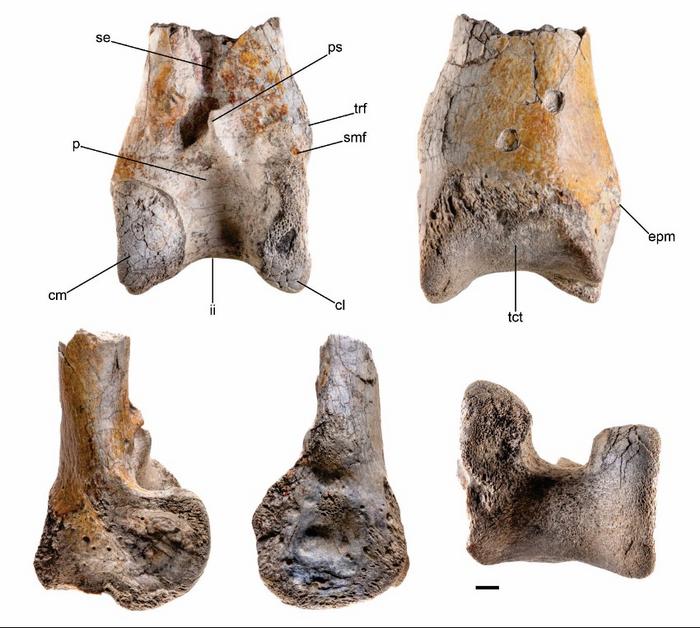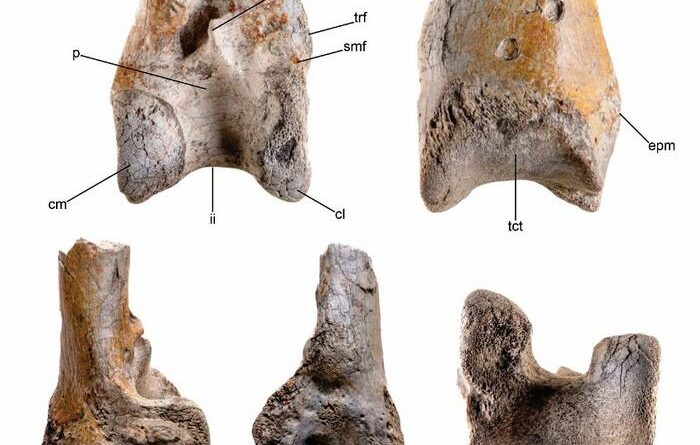12 Million-Year-Old Fossils Reveal What May Be the Largest Bird That Ever Lived
A newly discovered leg bone from Columbia may be from the largest limb of Phorusrhacid family – properly known as “scary birds” – we have found, and we would have been more than 3 meters long. The team that interprets the fossils thinks that the person from he was 5-20 percent bigger than the previous record holder.
Now that we know that birds are dinosaurs, it is not surprising that a few regained their original status in the post-Cretaceous period. The most fearsome birds of the Cenozoic were often on islands, like the elephant birds of Madagascar or the moa of New Zealand, where they faced little competition from mammals.
The Phorusrhacidson the other hand, they fully earned their nickname as “scary birds”. They were not only carnivores, rather than subsisting on fruit or seeds like many large birds, but they were the top predators for at least 43 million years in South America where the large mammals were. there are many. They probably filled the same area in Antarctica before it became ice.
The bone that expands the size of the scary birds is not new, as it was found about 20 years ago. However, when Cesar Perdomo of the Museo La Tormenta in Colombia found the fossil, he wasn’t sure what it was. Researchers have now made a 3D model of the bone and concluded that it is from a member of Phorusrhacids.
“The scarecrows lived on the ground, had legs and arms that could run, and most of them ate other animals,” explains co-author Dr Siobhan Cooke of Johns University. Hopkins in a statement. Size calculations based on a single bone fragment are difficult, but Cooke and co-authors estimate that it would have weighed 156 kg (343 pounds). Since their shorter-legged relatives were 3 meters (10 feet) tall, this one may have exceeded that height.

It is only part of the left tibiotarsus, but it shows that its owner was a fearsome bird larger than any found before.
Image credit: Degrange et al., 2024, Palaeontology
The fossil is from the Miocene, 12 million years ago, and is from the lower left leg, which is about the size of a human shin. Its size has led paleontologists to question its origins, but research reveals deep pits, a unique feature of Phoruscharcids leg bones. In addition to the natural burrows, the examinations also revealed teeth marks, possibly from a member of the crocodile group.
Cooke and co-authors of the paper describing the findings think that the bite comes from Purussaurus. Despite the fate of its name, Purussaurus it wasn’t a dinosaur, but it was scary all the same: a 9-meter (30-foot) monster.
“We suspect that the fearsome bird would have died from its injuries given the size of crocodiles 12 million years ago,” Cooke said.
Apart from its size and suspected cause of death, the discovery is remarkable for another reason. Most of the remains of scary birds have been found in and around Argentina. The Tatacoa Desert, Colombia, where this was found, is north of the equator. Its dry canyons have been a rich source of fossils for over a century, but The phorushacids I have never been there before.
The authors take this as a sign The phorushacids they were not very common in what is now Tatacoa, which was a rich river province at the time this man lived. On the other hand, Cooke admitted, “It is possible that there are fossils in the extant collection that have not yet been identified as scarecrows because the bones are not examined more than the lower leg that we found.”
Scary birds or not, the place at the time would have been a wildlife documentarian’s dream. Cooke said: “It’s a different kind of environment than what we see today or in other parts of the world in the period before South and North America were connected. Examples include glyptodonts (relatives of car-sized armadillos), giant sloths, ungulates such as African zebras or impalas, and even primates whose ancestors who took a long boat trip.
However Phorusharcid Fossils were most common in the southern part of South America, finding one so far north is not entirely surprising. When Panama was connected to South America, allowing species to exchange between the two continents, the northern countries prospered more. As far as we know, the scarecrows were the only large animals from South America that used the connection, which was found in places like Texas. It seems that they crossed over 5 million years ago and must have been in this area before then. However, before that no one of the family was found in South America north of southern Peru, a distance of more than 2,000 kilometers (1,243 miles).
This study is open access in Paleontology.
#MillionYearOld #Fossils #Reveal #Largest #Bird #Lived
